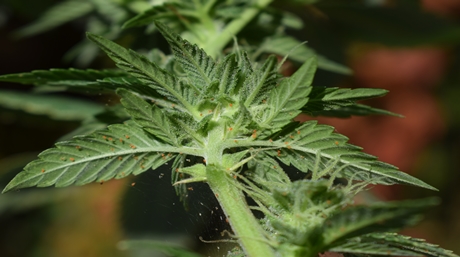t helps big time when you are in a position to fathom at the earliest moments how to get rid of powdery mildew on cannabis plants. If you set your eyes on wilted and mottled leaves in your marijuana plants at any given time, please take action. Also, if the leaves appear spotted, flour-like, and fuzzy, that could be a disaster in waiting. Recognizing the symptoms early is essential when learning how to get rid of powdery mildew on cannabis plants effectively.
Signs of white powdery on cannabis
Mildew spreads fast and can render your joy useless within minutes. That said, if you see white patches on the weed leaves or buds, that is undeniably mildew on marijuana. The condition can be rectified to the entirety if you happen to see it early. This explains why we recommend that cannabis farmers accord their beauties the attention they deserve. Knowing how to get rid of powdery mildew on cannabis plants as soon as you detect these signs can help save your entire harvest.
It is important to note that mildew mostly affects the smallest cannabis plants on a farm before going for the fastest. If there is a somewhat damp scent in the garden, it is essential to note that the buds have been affected, and you should act quickly if you’re learning how to get rid of powdery mildew on cannabis plants effectively.
The main cause for how to get rid of powdery mildew on cannabis plants
Cannabis farmers who cultivate their plants in high-humidity areas (specifically with more than 55% Relative Humidity) face mildew problems. Ventilation needs to be ensured in these places to strike a balance.
High humidity levels are the leading cause of powdery mildew. Understanding how to get rid of powdery mildew on cannabis plants begins by addressing this environmental factor.
Secondly, if one plants their strains in such a way that there is contact among different strains, then the highest chances are that mildew will develop and spread across the farm. This means that spacing is crucial and should be done so that no plant will end up touching the other’s leaves, regardless of size. Also, proper spacing means that should any plant be affected, how to get rid of powdery mildew on cannabis plants becomes a more manageable task.
Lastly, clones may cause mildew in marijuana. Picture this: If you used a mildew-infested clone, then the highest chances are that the same clone will end up transferring mildew to the other neighboring strains.

Avoiding how to get rid of powdery mildew on cannabis plants
As an adage goes, prevention is better than cure, which doesn’t exclude mildew on marijuana. So, when possible, we would recommend that you take these precautionary measures before you may start looking for how to get rid of powdery mildew on cannabis plants. The best treatment against powdery mildew includes:
- Ensure that you have sufficient space before transplanting your ganja strains.
- Water the plants when you are assured that after that, the plants will get sufficient light, preferably more than 5 hours. Of course, this is irrespective of whether the light is natural or artificial.
- Trim the fan leaves to ensure continuous airflow between the leaves and the buds. Aeration helps in keeping skyrocketed humidity levels at bay.
Apple cider vinegar against powdery mildew
Apple cider vinegar for powdery mildew is one of the oldest yet dependable measures to eliminate mildew from cannabis plants. The process is quite straightforward since you must mostly mix two full tablespoons of apple cider vinegar per liter of clean water. We recommend that you use organic vinegar for the best results.
Mix them and spray them on your plants. You can even do this before you have a mildew problem to prevent it. Take care not to use too much vinegar, as it can burn plants. If your mildew problem has progressed quite far, an apple cider vinegar concentration of more than 5% may be needed. Vinegar has antifungal and antibacterial properties, and it can be a cheap and effective treatment for many types of mold.
A mixture of milk and water is another easy way to fight against powdery mildew. Weekly spray your plants (when they will have light for a few hours) with 1 part milk to 9 parts water. This strange concoction works for mildew because milk’s protein reacts to the sun and light and creates an antiseptic. You can increase the ratio of milk to water, but don’t go overboard, as it can have adverse side effects.
If you’re dealing with infected plants and you’re disposing of leaves or other affected trimmings, be sure to get rid of them in closed plastic bags as the spores can easily escape and manage to find their way to other plants.
Although powdery mildew may seem a big and disgusting problem initially, it’s cheap and easy to fix. Just keep an eye on your plants and make sure to catch them before it spreads!
Late discovery of powdery mildew on buds?
If you’ve discovered powdery mildew too late, we’re sorry to say that the most effective option might be the hardest one: removing the infected plant entirely. As tough as it sounds, uprooting one plant could save the rest of your garden.
This is often the only way how to get rid of powdery mildew on cannabis plants when the infection is beyond treatment. If you wait too long, mildew spores can quickly spread to neighboring plants and ruin your entire grow.
It’s a loss, yes—but losing your whole crop would be far worse. Learn more about effective plant care practices to catch issues like this sooner next time.
















